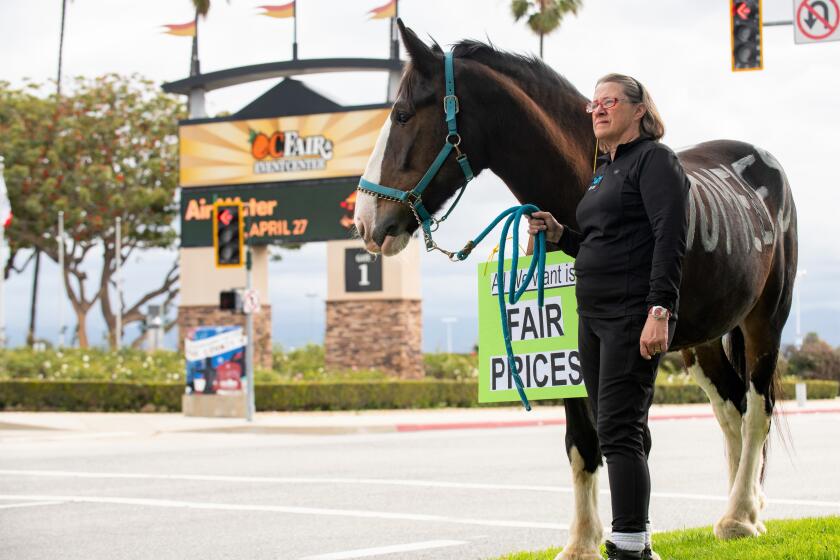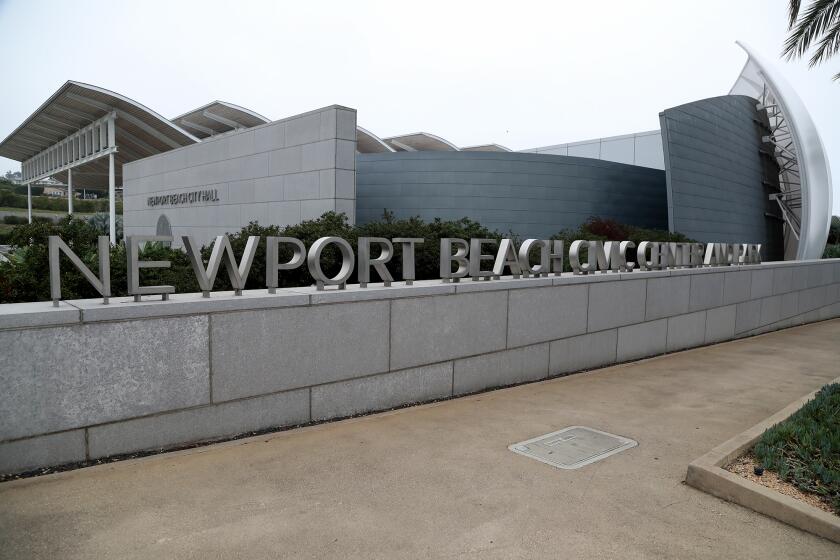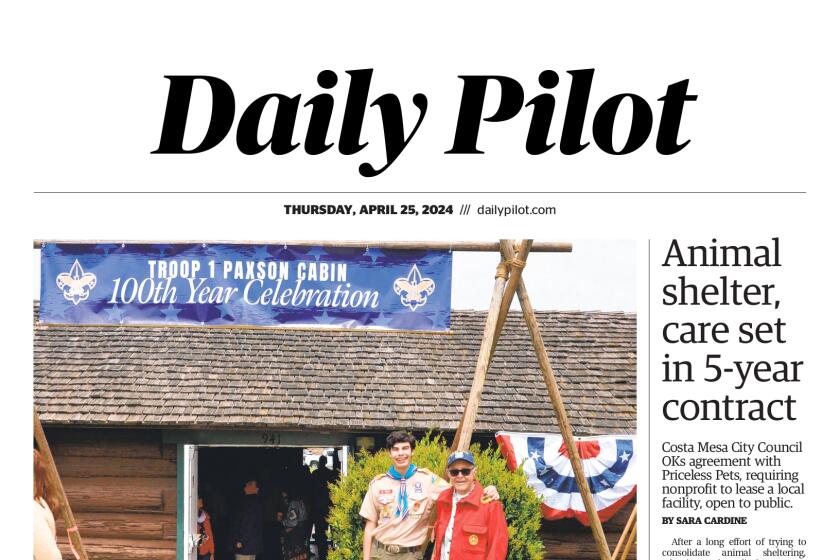Preservationists celebrate state Supreme Court ruling that Newport Beach improperly approved Banning Ranch project
For preservationists who have been entrenched in a long, bitter battle against development of a 401-acre coastal swath known as Banning Ranch, Thursday was a day of celebration.
The California Supreme Court ruled unanimously Thursday that the city of Newport Beach failed to adequately review a residential, hotel and retail development proposed for the site, much of which has been fenced off and occupied by oil operations for decades.
The decision, written by Justice Carol Corrigan, concludes a nearly five-year lawsuit by the Banning Ranch Conservancy — which for a decade has advocated for the area to remain open space — against developer Newport Banning Ranch LLC and the city of Newport Beach.
The suit, filed in 2012, alleged the project’s environmental impact report was inadequate and that the city violated its general plan by failing to work with the California Coastal Commission to identify wetlands and environmentally sensitive habitats at Banning Ranch. The lawsuit made its way through lower courts until it ended up with the state Supreme Court.
For a project on the site to move forward now, Newport Banning Ranch would have to bring an amended environmental impact report to city leaders for review.
Steve Ray, executive director of the Banning Ranch Conservancy, fielded phone calls Thursday morning from supporters who sought to confirm what they had long hoped for. The conservancy hopes to buy the land.
“All of our people are calling, just going crazy,” Ray said. ”I’m still waiting for my ears to work after all the shouting and yelling.
“We’re very excited,” he added. “Their project is dead.”
But Sam Singer, a spokesman for the developer, said the high court’s decision would delay the project by a year or two but would not kill it.
“Newport Banning Ranch is not going away,” Singer said.
Still, the decision was another severe blow for Newport Banning Ranch, which had sought to build 895 homes, a 75-room hotel, a 20-bed hostel and 45,100 square feet of retail space on 62 acres.
After about a year of back and forth between the developer and Coastal Commission staff, the commission in September rejected the Banning Ranch development, partly because the project could affect burrowing owls present on the oilfield.
Newport Banning Ranch sued the Coastal Commission, alleging it violated the developer’s constitutional rights that protect citizens from the taking of private property. The company is seeking $490 million in damages as part of the lawsuit, which is ongoing.
In 2012, the Newport Beach City Council approved a larger version of the proposed project that included 1,375 homes, a 75-room resort hotel and a retail complex atop the bluff portion of the land.
The Supreme Court’s decision stated the city “suppressed” information about environmentally sensitive habitats on the property.
“The public was deprived of a full understanding of the environmental issues raised by the Banning Ranch project proposal,” Corrigan wrote.
The California Coastal Act requires attention to sensitive habitat, but the city’s report did not address it despite “ample evidence” of its existence, the court said.
“The omission resulted in inadequate evaluation of project alternatives and mitigation measures,” Corrigan wrote.
In a statement Thursday, the city said its consideration of the project included a thorough review of more than 600 pages of environmental documents that contained analyses of the site’s biological resources, wetlands, special-status species and critical habitats.
“The environmental analysis prepared for the project provided the Coastal Commission with the necessary information to make determinations about environmentally sensitive habitat areas without engaging in speculation,” the city wrote.
Ed Selich, who was a member of the City Council when it approved the development, said the court’s decision is a major loss for the developer and the community.
Selich said he appreciated that the development plans allowed for a large area of open space.
“Now who knows where this is going to go?” Selich said. “Is it going to go on for another generation with the public being denied use of the space? A whole generation of people don’t get to use it. I think that’s the loss.”
But many Costa Mesa and Newport Beach residents who have long opposed the project took to social media to celebrate the decision.
The project site, which is in Newport Beach’s sphere of influence, is on the southern border of Costa Mesa’s Westside and has drawn consternation from some residents and city officials there.
Costa Mesa officials have estimated that street improvements to accommodate traffic from the proposed project would likely cost the city millions.
“We will be impacted dramatically by an increase of traffic on our streets, and if the mitigation and analysis are not appropriate, that hurts Costa Mesans,” Mayor Katrina Foley said Thursday. “It needs to be done correctly.”
Wendy Leece, a Costa Mesa resident and former City Council member who lives next to Banning Ranch, said she supports the Supreme Court’s decision that issuing an accurate environmental impact report is the right thing to do.
“Only God knows what’s going to happen next, but there are hundreds of Costa Mesans that are united in the effort to protect the city against negative impacts, especially traffic that would come onto Costa Mesa streets,” Leece said.
Twitter: @HannahFryTCN
All the latest on Orange County from Orange County.
Get our free TimesOC newsletter.
You may occasionally receive promotional content from the Daily Pilot.




